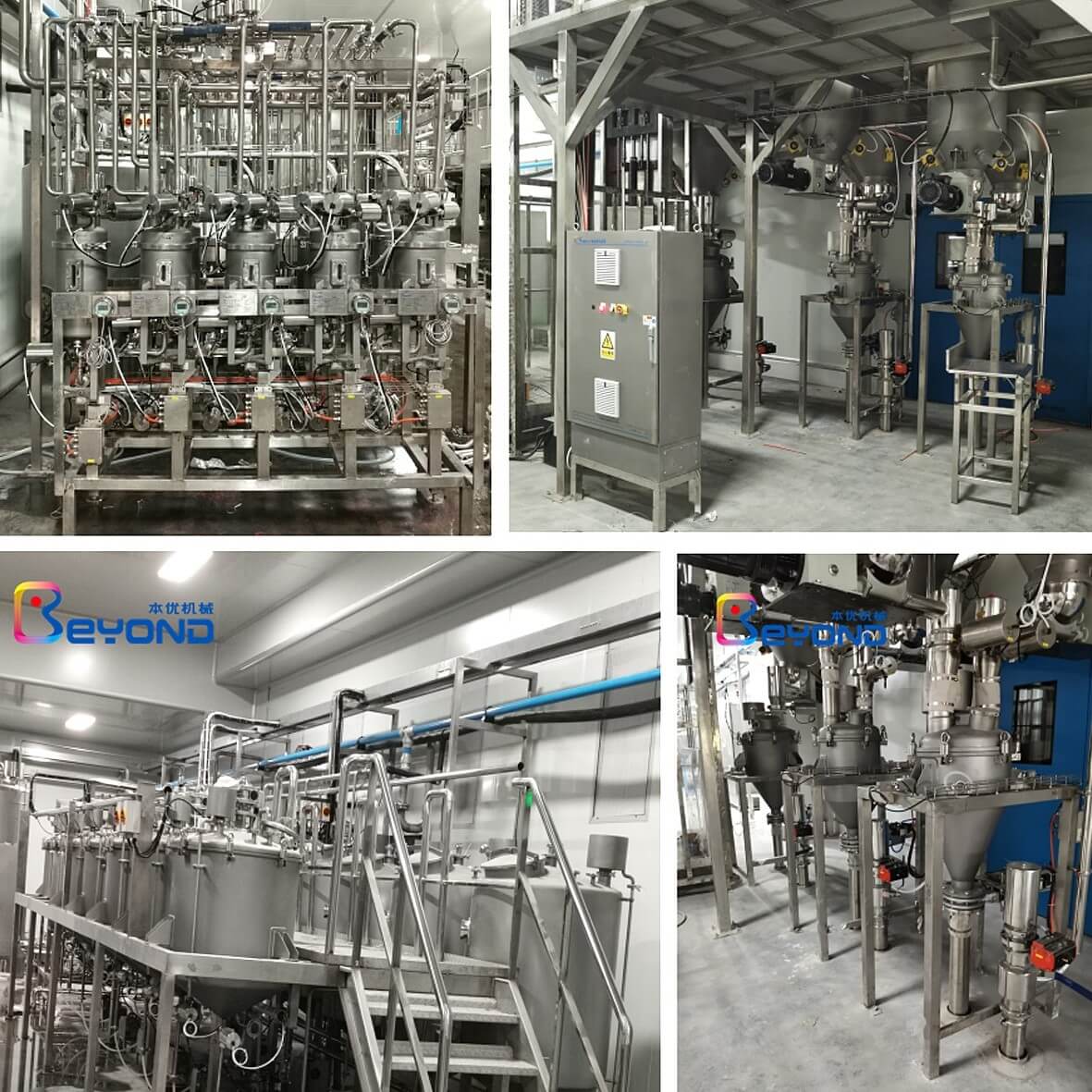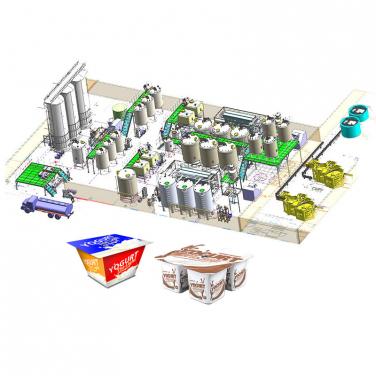
In the food processing industry, Pickled vegetables is one of the traditional foods loved by consumers. The design and planning of its production and processing plant plays a vital role in improving product quality, ensuring food safety and improving production efficiency. This article will discuss the design planning of Pickled vegetables processing plant from the aspects of process flow layout, equipment selection, environmental protection, energy conservation, health and safety, and intelligent management.
1. Raw material receiving area: Ensure that the raw material acceptance and temporary storage area is spacious and tidy, and use advanced weighing and testing equipment for quality control.
2. Pre treatment area: including cleaning, cutting and other processes, efficient bubble cleaning machines and intelligent cutting equipment should be equipped, and an independent drainage system should be set up to avoid cross contamination.
3. Pickling and fermentation area: according to the type of Pickled vegetables and the requirements of the pickling cycle, set up fermentation tanks or tanks with different capacities, reasonably arrange the space layout, and meet the fermentation temperature, humidity and ventilation conditions.
4. Seasoning and sterilization cooling area: equipped with automated seasoning equipment and efficient sterilization facilities (such as pasteurization and microwave sterilization), followed closely by rapid cooling equipment to maintain product taste and color.
5. Filling, sealing and packaging area: Automated filling lines and vacuum sealing machines are used to ensure sealing effectiveness; Simultaneously plan a reasonable packaging assembly line to reduce the pollution risk caused by manual operations.
6. Finished product storage and outbound area: Set a suitable temperature and humidity environment, use an intelligent warehouse management system to achieve orderly storage and rapid outbound of products.
With the acceleration of the modernization process of the food processing industry, Pickled vegetables, as a traditional flavor food deeply loved by consumers, it is particularly important to adopt an advanced full set of solutions in its processing. This article will deeply discuss the core technological process, key technologies and the application in equipment selection of Pickled vegetables full processing solutions.
1. Raw material pretreatment: including raw material acceptance, cleaning, and cutting. We use an efficient bubble cleaning machine to remove impurities and disinfect them, and then use intelligent cutting equipment to accurately cut according to different product requirements.
2. Pickling and fermentation: After pre-treatment, the raw materials enter the pickling stage. Vegetables are short-term or long-term pickled using a scientifically proportioned saline solution, and fermented at an appropriate temperature to produce a unique sour taste and texture.
3. Desalination and seasoning: use the centrifugal desalination technology to reduce the salt content to the standard range, and then add sauce and other seasonings according to the specific formula in combination with the blending equipment to ensure that Pickled vegetables taste rich and meet health standards.
4. Sterilization and cooling: sterilize the pickled Pickled vegetables through advanced technologies such as pasteurization, high-pressure sterilization or microwave sterilization, and then rapidly cool them to maintain color and nutrition.
5. Filling and sealing: automatic Pickled vegetables filling production line is selected to achieve accurate and quantitative filling, and vacuum sealing machine is used for sealing to ensure product quality, safety and stability.
6. Packaging inspection: Finally, the outer packaging operation is completed using automated packaging equipment, and the quality of the finished product is strictly controlled through a quality inspection system, such as weight, appearance, microbiological indicators, etc.
In the modern food processing industry, it is very important to ensure the food safety and quality stability of Pickled vegetables products. Among them, pasteurization, as an effective low-temperature sterilization technology, has been widely used in the field of Pickled vegetables processing.
This article will elaborate the design principle of Pickled vegetables pasteurization line and its remarkable advantages in improving product quality and ensuring food safety.
1、 Design principle of pasteurization line The Pickled vegetables pasteurization line is mainly composed of preheating section, high-temperature sterilization section, cooling section and control system:
1. Preheating treatment section: first, Pickled vegetables products enter the preheating stage through the conveyor belt, and gradually increase the temperature to reduce the internal temperature difference of the product, so as to avoid the structural damage of the product caused by the excessive internal and external temperature difference during the subsequent rapid heating.
2. High temperature sterilization section: at this stage, Pickled vegetables products are heated to 60-85 ℃ and kept for a certain period of time (usually different according to product type and specification) to kill most microorganisms, especially Botox and other pathogens that threaten human health.
3. Cooling stage: After sterilization is completed, the product immediately enters the cooling stage, using cold water or cold air for rapid cooling to quickly drop to room temperature, preventing the decrease in product taste, color, and nutritional value caused by prolonged high temperature, and effectively preventing secondary microbial contamination.
4. Control system: The entire assembly line is equipped with an advanced PLC automatic control system, which can monitor key parameters such as temperature and time in real-time at each stage, ensuring that the sterilization process strictly follows the set program and achieves the predetermined sterilization effect.
1. Food safety assurance: Pasteurization technology can effectively kill bacteria and spores in Pickled vegetables, reduce the risk of food poisoning, and meet strict food safety standards, such as HACCP system requirements.
2. Nutrient retention: Compared with high-temperature high-pressure sterilization and other methods, pasteurization is a low-temperature sterilization process, which can maximize the retention of vitamins, minerals and other nutrients in Pickled vegetables and improve product quality.
3. High production efficiency: The pasteurization assembly line achieves automated continuous operation, greatly improving production efficiency, reducing labor intensity, and ensuring stable and reliable equipment operation with low failure rates.
4. Energy saving and consumption reduction: Compared to high-temperature instantaneous sterilization, pasteurization has relatively lower energy consumption, which is beneficial for enterprises to save costs and meet the needs of sustainable development.
To sum up, with its scientific and reasonable design principles and many application advantages, the Pickled vegetables pasteurization line has become an indispensable part of the modern Pickled vegetables processing industry, taking into account the product quality and economic benefits while ensuring food safety.

3. Key Technologies and Equipment Selection Points
1. Intelligent control: The entire production line should be equipped with a PLC automatic control system, which can monitor the operation status of each link in real time, effectively reduce manual operation errors, and improve production efficiency and stability.2. Energy conservation and environmental protection: When selecting equipment, consider energy utilization efficiency, such as using energy-saving cleaning equipment, heat recovery systems, etc., while paying attention to the configuration of wastewater treatment facilities to ensure green and environmentally friendly production processes.
3. Customized service: For different types of Pickled vegetables (such as cucumber, radish, beans, etc.) and special tastes, the supplier should provide targeted process optimization plans and corresponding professional production equipment.
4. Food safety guarantee: Adhere to the HACCP system throughout the process, use food safety grade materials to make equipment, ensure no pollution risk, and meet the hygiene standards requirements of relevant national regulations for food processing enterprises.
In conclusion, the complete processing solution of Pickled vegetables covers the whole process management from raw materials to finished products. It is necessary to comprehensively use modern food processing technology and equipment, constantly optimize the production process, improve product quality, and ensure that the enterprise can provide high-quality Pickled vegetables products to the market continuously, efficiently and safely.
When designing and constructing, full consideration should be given to the treatment facilities for wastewater, exhaust gas, and waste residue, and environmental protection regulations should be strictly followed.
Reduce energy consumption and achieve green production through measures such as thermal energy recovery and water-saving technology.
Fully implement the HACCP system, establish strict food safety management systems, and implement full process monitoring from raw materials to finished products.
Implement zoning management within the factory, clarify personnel flow paths, and avoid cross contamination.
Regularly disinfect, clean, and maintain facilities and equipment to ensure that the production environment meets hygiene standards.
Apply modern information technology to build an intelligent production management system, monitor various data indicators in the production process in real time, and provide scientific basis for decision-making.
Realize high integration of logistics, information flow, and capital flow to improve the overall operational efficiency of the factory.
To sum up, the design and planning of Pickled vegetables processing plant is a systematic project, which requires comprehensive consideration of process flow, equipment configuration, environmental protection, food safety, intelligent management and other aspects, and strives to create a modern, green and intelligent efficient Pickled vegetables processing base.
Shanghai Beyond Machinery Co., Ltd
Beyond Machinery specializes in the design and manufacturing of Pickled vegetables processing plant. Please contact us now, and our professional technical engineers will customize the equipment plan for Pickled vegetables processing plant and provide a quotation. Please contact us now to obtain the latest equipment plan and quotation.



